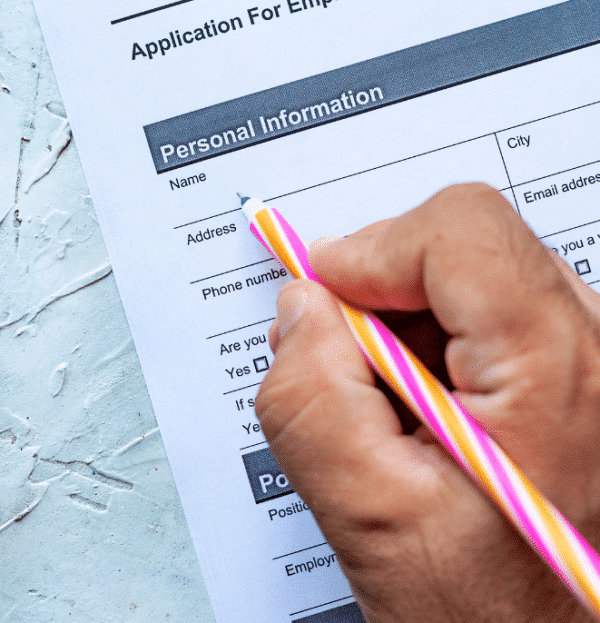
This section delves into the specific processes of the I-130 petition and the naturalization procedure, providing a clear understanding necessary for individuals seeking to upgrade their petition after becoming a U.S. citizen.
An I-130 petition, formally known as the Petition for Alien Relative, documents that U.S. citizens or lawful permanent residents file with U.S. Citizenship and Immigration Services (USCIS) to establish a familial relationship with a foreign national. The purpose of this petition is to request the government to recognize this relationship and consequently grant an immigrant visa or adjust the foreign national’s status to that of a lawful permanent resident.
Key Elements of the I-130 Petition Include:
Naturalization is when a lawful permanent resident acquires U.S. citizenship after meeting specific eligibility requirements. It involves several steps, from application to taking the Oath of Allegiance.
Steps in the Naturalization Process:
When an individual becomes a U.S. citizen, they can upgrade an I-130 petition they previously filed as a permanent resident for their spouse and/or minor children. The upgrade can expedite the process for beneficiaries to receive a visa.
To be eligible for an upgrade of an I-130 petition, the petitioner must have filed an I-130 form while they were a lawful permanent resident, and following that, they have become a naturalized U.S. citizen. It’s pertinent that the petitioner sends a letter alongside proof of their U.S. citizenship to the United States Citizenship and Immigration Services (USCIS). They must reference the original I-130 petition and include the USCIS receipt number to facilitate the process. The applicant’s relationship with the beneficiaries must also remain qualified under the immediate relative’s category for the upgrade to apply.
When a U.S. permanent resident naturalizes and becomes a citizen, they can upgrade a previously filed I-130 petition to reflect their new status. This can accelerate the immigration process for their beneficiaries.
An individual must inform the United States Citizenship and Immigration Services (USCIS) of their change in citizenship status. They can do this by sending a letter to the immigration agency where the I-130 was originally submitted.
The primary documents required for upgrading an I-130 petition include:
The request to upgrade the I-130 petition should be mailed to the USCIS Service Center to process the original application. It is crucial to write “I-130 Upgrade” on the envelope to ensure proper handling. An individual should also include their contact information should USCIS require further support.
When upgrading an I-130 petition after naturalization, one should be aware of the changes that may impact the timeline of the petition’s processing. Accurate tracking and recognition of these changes are crucial in managing expectations for both the petitioner and the beneficiary.
As of 2024, the United States Citizenship and Immigration Services (USCIS) reports that the expected processing times for Form I-130 can range from as little as 5 months to up to 10 years. Various factors influence this timeline, including:
Immediate Relatives: Processing for immediate relatives of U.S. citizens, such as spouses, unmarried children under 21, and parents, typically falls on the lower end of the processing spectrum.
Preference Categories: Other family members, such as married children or siblings, fall into preference categories subject to annual quotas and longer wait times.
To monitor the progress of an upgraded I-130 petition:
The beneficiary may also sign up for automatic updates via email or text message through the USCIS Electronic Immigration System (USCIS ELIS). It is important to proactively track the upgrade status to promptly address requests for additional evidence or changes in the process.
In the process of upgrading an I-130 petition following the petitioner’s naturalization, certain complications may arise. These issues can generally be resolved with clear communication and proper documentation.
The upgrading of an I-130 petition to reflect a petitioner’s new status as a U.S. citizen can encounter several issues:
Resolutions include:
Responses to USCIS requests and the resolution of visa classification upgrades may introduce delays. These could stem from:
Mitigation strategies may encompass:
Upgrading an I-130 petition after naturalization presents tangible benefits that can expedite family reunification. Upon becoming a U.S. citizen, petitioners unlock enhanced opportunities for their family members’ immigration process.
The chief advantage for the beneficiaries is that they transition from the preference-relative category to immediate relative status, eliminating the backlog associated with visa wait times. Immediate relatives of U.S. citizens, namely spouses, unmarried children under 21, and parents, are not subject to numerical visa limitations. This often results in faster processing and a shorter path to obtaining a Green Card.
Once the petitioner becomes a U.S. citizen, the priority date becomes irrelevant for the immediate family members because no visa quotas limit their immigration. For relatives previously in a capped category, upgrading the I-130 can lead to earlier visa availability, as they are now classified as immediate relatives, making family reunification potentially swifter and less complicated.
When a U.S. Permanent Resident becomes a Naturalized Citizen, they can upgrade a previously filed Form I-130, Petition for Alien Relative. This process, while advantageous, requires meticulous adherence to immigration laws and procedures.
Compliance entails ensuring that all information is accurate and any changes in circumstances are promptly communicated to the United States Citizenship and Immigration Services (USCIS). When upgrading an I-130 petition after naturalization, petitioners must provide proof of their new citizenship status. This is typically done by submitting a copy of the naturalization certificate or U.S. passport.
Key actions to maintain compliance include:
Failure to comply may hinder the processing of your petition or lead to unintended delays. Ensuring that all actions conform to the set regulations will facilitate a smoother process for beneficiaries to obtain their immigrant visa under the immediate relative category.